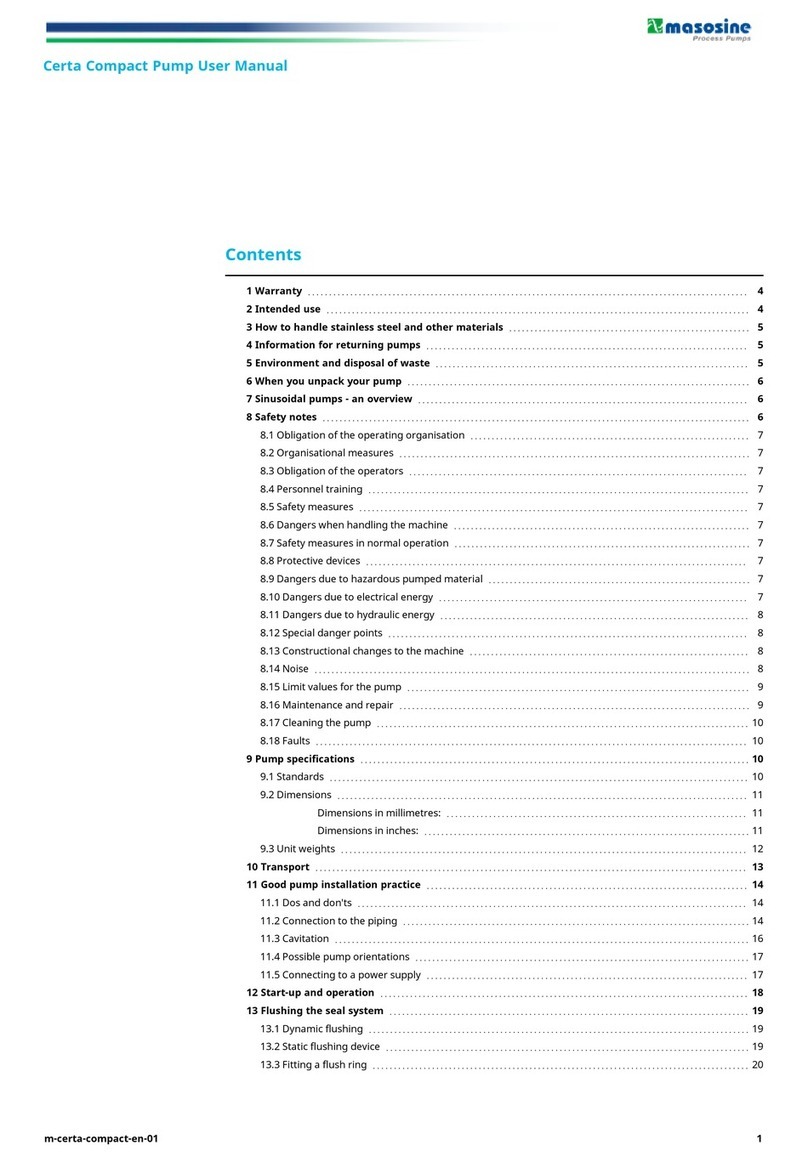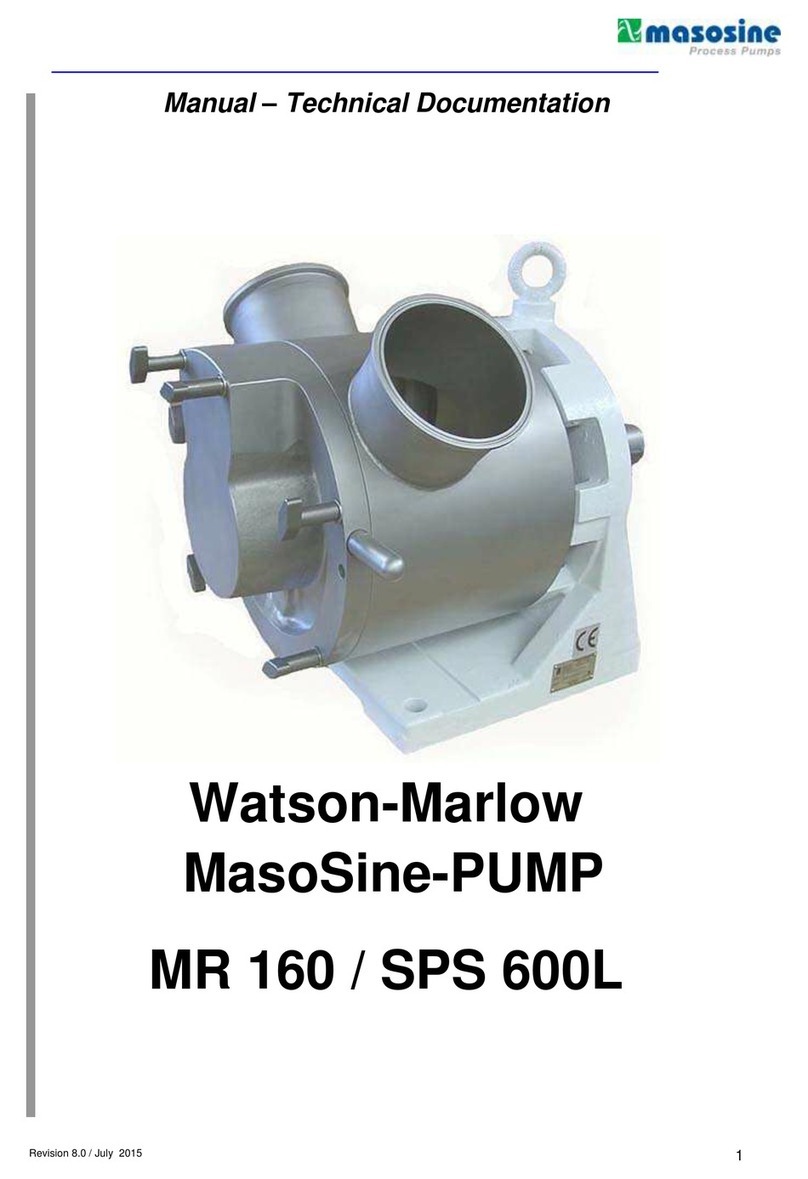
2 Warranty
Watson-Marlow GmbH MasoSine Division ("MasoSine") warrants this product to be free from defects in
materials and workmanship for a period of two (2) years from the date of shipment. This warranty
extends only to the original buyer. Products manufactured by others but furnished by seller are
exempted from this warranty and are limited to original manufacturer’s warranty.
This warranty shall not affect the warranty of the gear, motor or any other component which is not
manufactured by MasoSine.
MasoSine will not be liable for any loss, damage, or expense directly or indirectly related to or arising
out of the use of its products, including damage or injury caused to other products, machinery, buildings,
or property. MasoSine will not be liable for consequential damages, including, without limitation, lost
profits, loss of time, inconvenience, loss of product pumped, and loss of production. This warranty does
not obligate MasoSine to bear any costs of removal, installation, transportation, or other charges which
may arise in connection with a warranty claim.
Specific exceptions to the above warranty are:
Exceptions
Warranty and liability claims for personal and material damage are excluded if they are attributable to
one or several of the following causes:
oNormal wear and tear of the product
oAccident, misuse, or improper installation, operation, or maintenance of the product
oDeterioration of the products, in whole or in part, which is incidental to the transit of the product
oUse of the machine not as intended
oOperating the machine with defective safety devices or safety and protective devices not correctly
attached or not functioning
oNon-compliance with the operating instructions regarding transport, storage, installation, start-up,
operation, maintenance and setting of the machine.
oUnauthorised constructional changes to the machine
oAlterations or repairs performed by buyer without the written consent of MasoSine
oCatastrophe due to the effect of foreign bodies and acts of God
oAbnormal conditions such as, without limitation, corrosive attack or excessive dirt in the system, or
electrical supply failure
oWilful default or negligence by the buyer, its employees, agents consultants, or subcontractors
MasoSine grants no implicit warranties on the suitability of the products described for a certain
application. MasoSine accepts no liability for errors contained in this documentation or consequential
damage occurring due to the design, performance and the use of this documentation.
MasoSine’s “General sales and delivery conditions” contain full details. These are available to the
purchaser at the latest when the purchase contract is finalised.
Subject to the warranty provisions in this section, MasoSine warrants that if the buyer returns the
product within the twenty-four month warranty period and on MasoSine‘s examination such product
proves defective as to material or workmanship, MasoSine shall make good the defect without charge by,
at MasoSine‘s option:
lrepairing the defective product;
lreplacing defective components of the defective product; or
lreplacing the defective product in its entirety
In no event:
i. shall the cost of the customer's exclusive remedy exceed the purchase price of the product;
ii. shall MasoSine be liable for any special, indirect, incidental, consequential, or exemplary
damages, however arising, even if MasoSine has been advised of the possibility of such
damages.
MasoSine shall not be liable for any loss, damage, or expense directly or indirectly related to or arising
out of the use of its products, including damage or injury caused to other products, machinery, buildings,
or property. MasoSine shall not be liable for consequential damages, including, without limitation, lost
profits, loss of time, inconvenience, loss of product being pumped, and loss of production.
This warranty does not obligate MasoSine to bear any costs of removal, installation, transportation, or
other charges which may arise in connection with a warranty claim.
MasoSine shall not be responsible for shipping damage of returned items.
Notwithstanding any other terms of this section, MasoSine does not limit or exclude its liability for fraud
or fraudulent misrepresentation or for death or personal injury resulting from its negligence or the
negligence of its employees, agents or subcontractors.
3 Intended use
The intended use of this product is listed in the order confirmation. The product should not be put to a
different use or a use going beyond the use described.
Consult MasoSine if you wish to change the product, its pressure, speed or operating temperature.
4 m-certa-plus-en-02
































